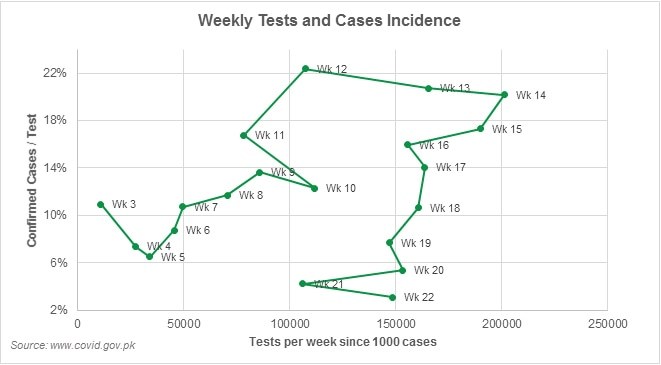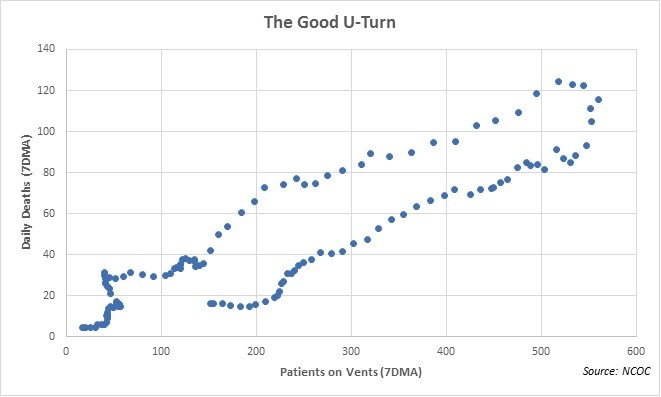Ten days post Eid-ul-Fitr (June 2020) was a disaster. The coronavirus peaked back then, with the share of positive cases going as high as 24 percent, comfortably the highest in the region, and amongst the highest in the world. Ten days post Eid-ul-Adha were feared to be the critical gauge of where Pakistan stood in terms of the outbreak. It seems the country stands rather tall. The latest daily infection rate of 2.63 percent is Pakistan’s lowest since almost the beginning.
People had shopped like crazy just before the first Eid, and the worst fears had materialized. Although SOPs were meant to be followed for cattle buying and slaughtering – there is not much evidence to suggest they were followed to any greater extent than the first Eid. The August Eid prayer gatherings were bigger and well-attended than the June Eid as well.
Inexplicable, stunning, miraculous, divine. Choose what you want, to describe the bending of the curve, which has put Pakistan where most European countries are right now in terms of the spread. Pakistan does not often (or ever) finds itself in European company. Pakistan’s is amongst also the sharpest drop in infection rate for any country that had it as high as 24 percent – only the United Kingdom did better for bringing down the rate from 30 percent to 4 percent in 40 days.

Now, the next big question remains whether or not the virus has peaked, and if there could be a second wave. The government, being on the cautious side, has (rightly) stayed short of announcing victory, and has continued to ask people to voluntarily adopt caution. The (official) end to the lockdown has also been announced, with effectively everything back to full swing, other than schools and large gatherings – which are also just a month away.
Now, smart lockdown may or may not have played a role in bringing the spread down. It could well be a coincidence that the smart lockdown came into play as the virus spread was on its way down, for whatever other reason. But Mobility numbers and anecdotal evidence both suggest, the movement was considerably higher for the entire period the spread was slowing down.

Now, no country has so far returned to the peak, having brought it down by more than three times. Pakistan’s share of positive tests has come down by five times from the peak. It would be an anomaly of gigantic magnitudes, if Pakistan were to go back to anywhere near those numbers.
That the case-to-fatality rate has by and large stayed flat for three months and has stayed significantly lower in the entire region as compared to other high infected regions – tells either the virus changes its behavior for regions, or the immunities differ from one region to another. Barring a week or two of panic in big cities, Pakistan seems to have successfully moved from the critical phase, without the healthcare system showing signs of being overwhelmed.

Now, on to testing. Pakistan’s testing peaked around eight weeks ago, a few days either side of the peak infection rate. Ever since, both have come down. Pakistan’s testing numbers are nowhere close to comparable with the developed world. Even the neighboring India, now tests double than Pakistan, on per million population.
But tests per million may not be the ideal way to gauge if the testing is adequate, because it is to be seen in the context of the size of outbreak. The World Health Organization (WHO) considers “at least two weeks of less than 5 percent of positive samples” to assess whether the outbreak is under control. Another WHO adequate testing criteria states “we would certainly like to see countries testing at the level of ten negative tests to one positive as a general benchmark of a system that’s doing enough testing to pick up all cases.“

Pakistan’s latest daily tests constructed per confirmed case stood at 36, whereas it has reported numbers higher than 10 for nearly a month. So, while the testing has reduced, it may still be enough and adequate – signaling that the outbreak is under control.























Comments
Comments are closed.